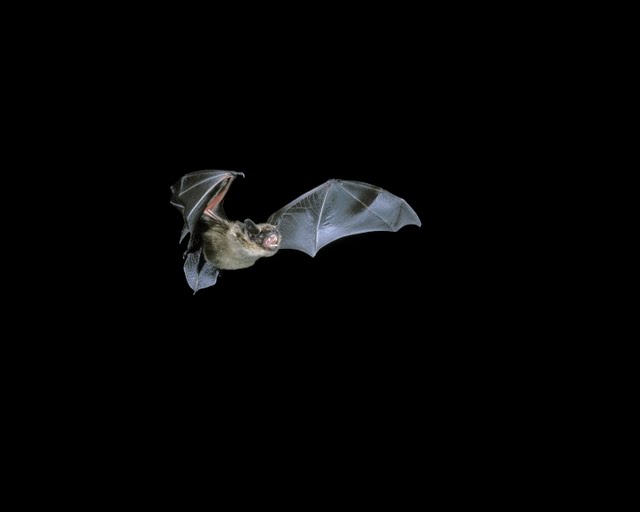If I were a betting man I’d wager my house that everyone old enough to tie their shoelaces in this country was a least aware of bats: what they look like and their nocturnal habits. The majority of people probably know about bats because of their close association with the occult and with horror films. Vampire myths form part of the fabric of Western culture. And the added influence of Halloween has reinforced this dark image; that bats are creatures of dread, that drink blood and love nothing more in their spare time than getting tangled in the hair of attractive damsels in distress.
However, of the 1240 or so bat species worldwide, only three New World species, the real vampire bats, actually feed on blood (two species prefer to feed on birds and the other, mammals including cattle and ermm, just ever so occasionally, the odd human). And perhaps at the risk of disappointing you even further, none of them has a propensity for entanglement in hair. No matter how well groomed.
Bats are truly distinguished from all other mammals by being capable of true flight. But it’s their extraordinary ability to build an accurate picture of their environment, not by sight but by sound, that puts them in a league apart from other mammals – even others that utilise sonar (namely whales and dolphins). It is this ability to “see” their nocturnal environment using their ears that makes them extraordinarily unlikely to get tangled in your hair.
As a result of being fast, small, nocturnal mammals that are practically inaudible to anybody over the age of 30, identifying bats is a tricky business. But if we can listen in to their high-pitched echolocation calls then we stand a much better chance of being able to distinguish them. Traditionally this has been the domain of experts using dedicated bat detectors. Even then, it is not particularly easy to identify bats from their calls. It takes a lot of experience to recognise one bat species from another and most bat detecting equipment has to be tuned into a particular frequency range meaning that you need a least some idea of what you’re listening for in order to find it.
However, this project seeks to forever change the way that people eavesdrop on bats. Admittedly, we are aiming for a prototype with this project but we should be able to establish whether or not it is possible to record and automatically identify bats using a normal everyday smartphone. The idea is an exciting one but the project presents some very interesting and tricky challenges.
The main purpose of this blog is to disseminate the findings of the project step by step. It’s a chance for us to communicate our successes and also our failures. We’ll be using this blog to communicate what we’ve learned so that others can avoid the same pitfalls when they come to look at similar problems. Hopefully, even to the layperson, this project will provide some interesting results. Bats are no doubt under-recorded almost everywhere they exist and due to their cryptic nature we know relatively little about aspects of their life history including behaviour and population dynamics. Even the distribution of certain species is poorly understood. We hope that the work we do on this project will open the door to helping us understand bats a little better.


